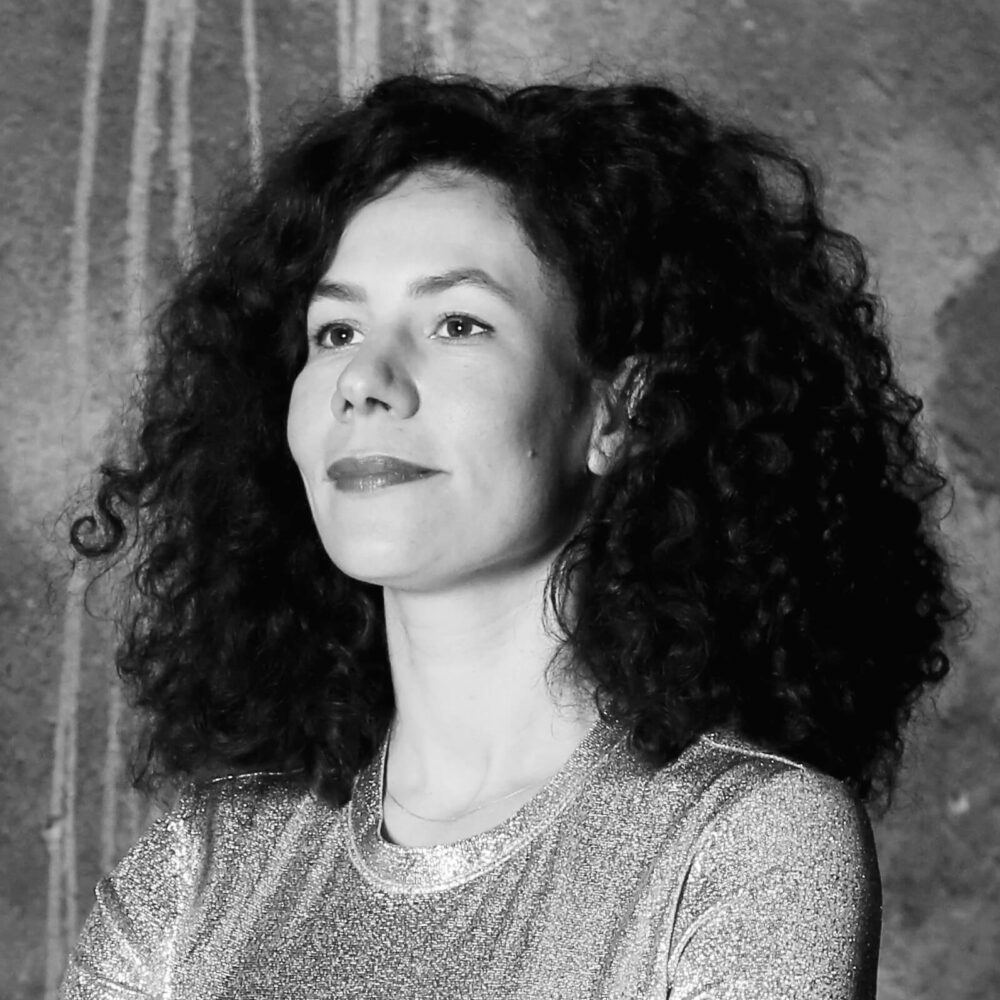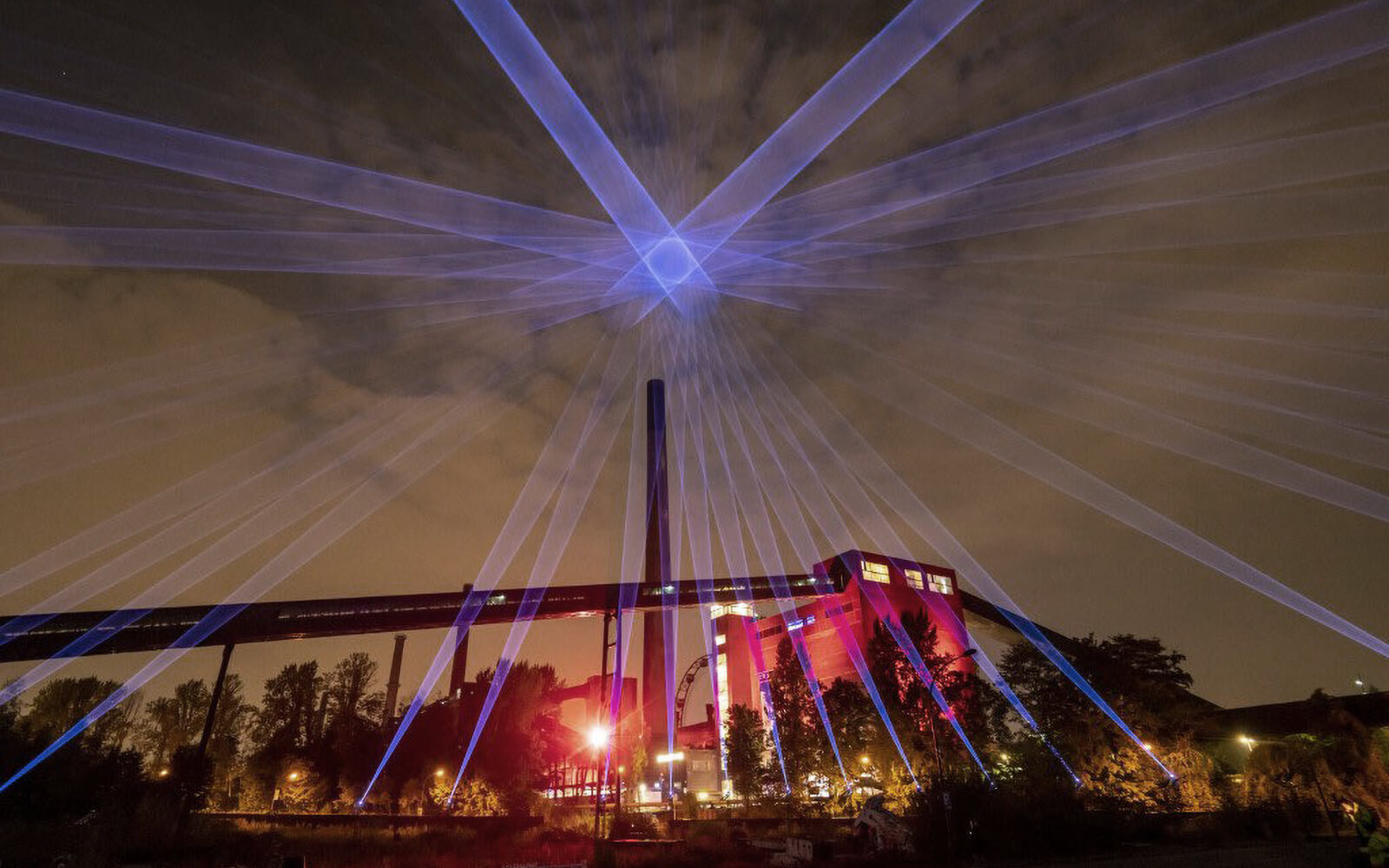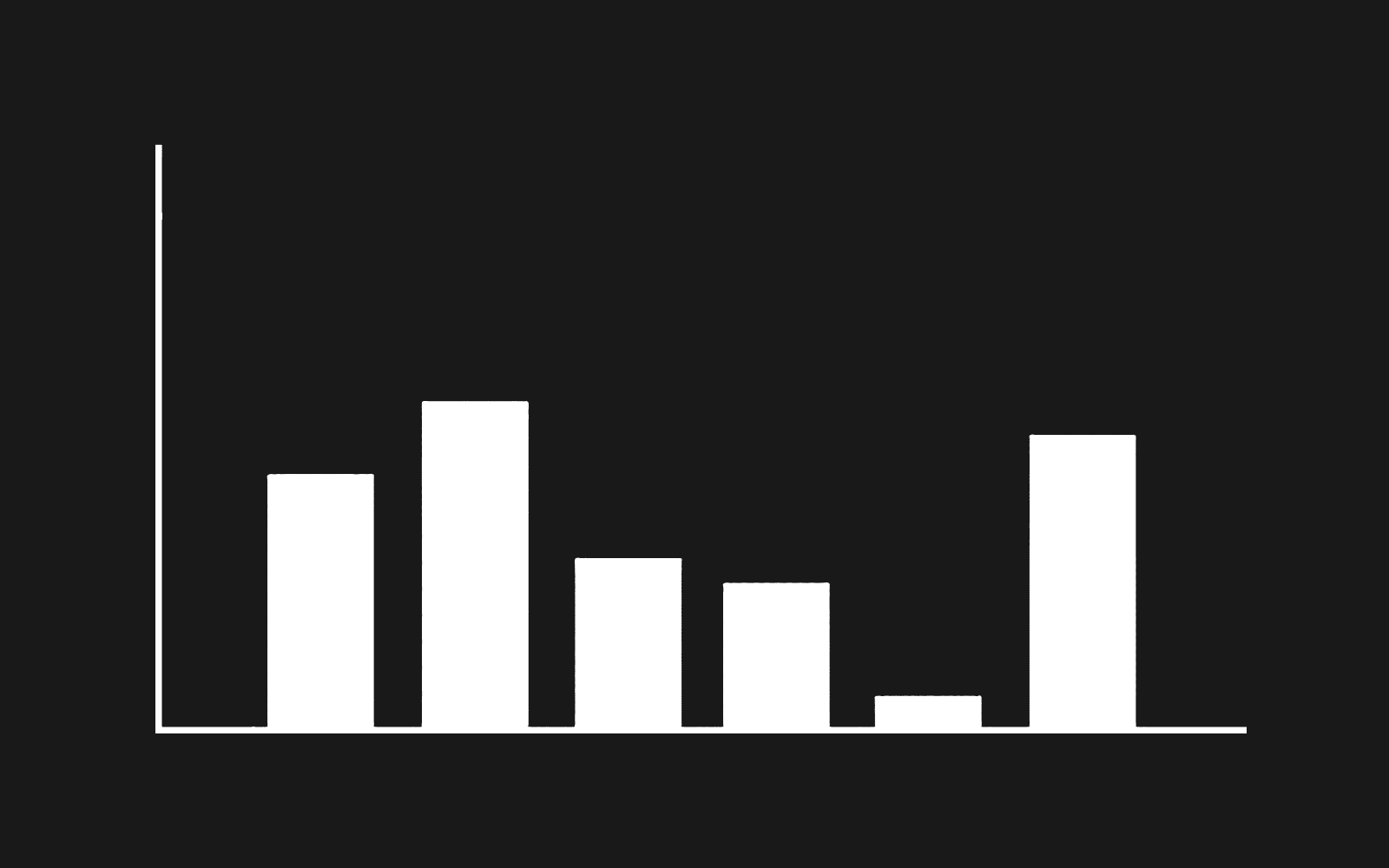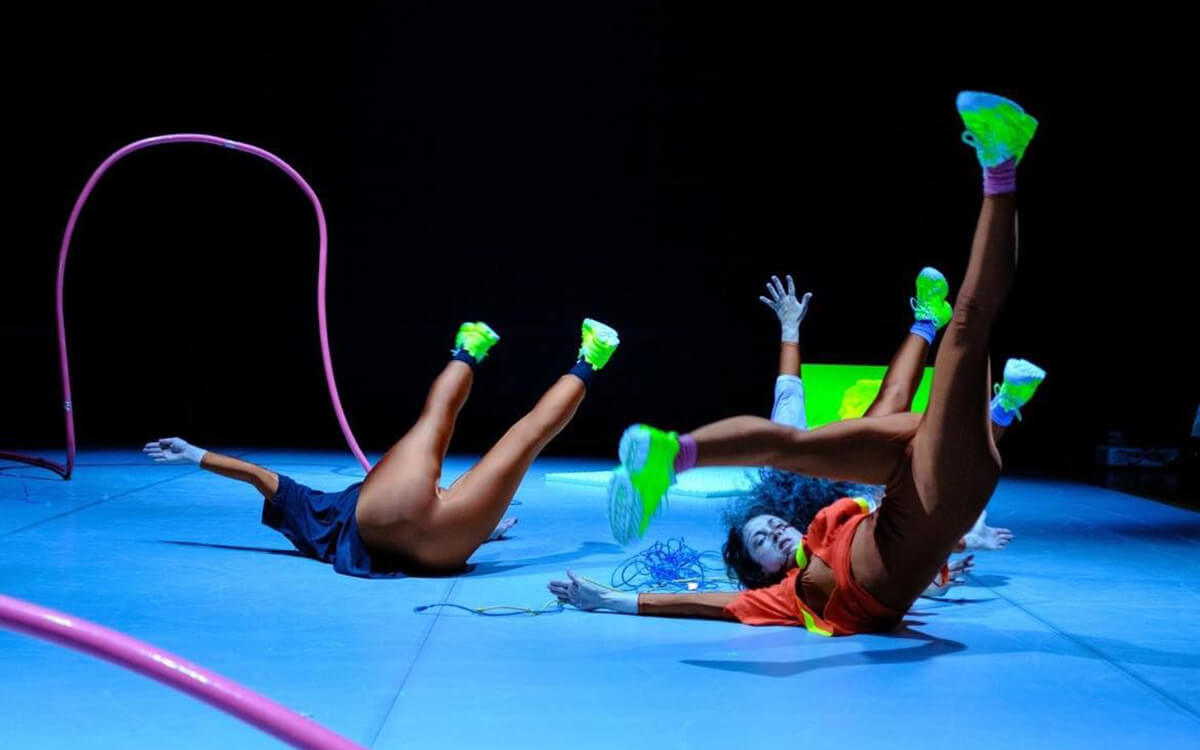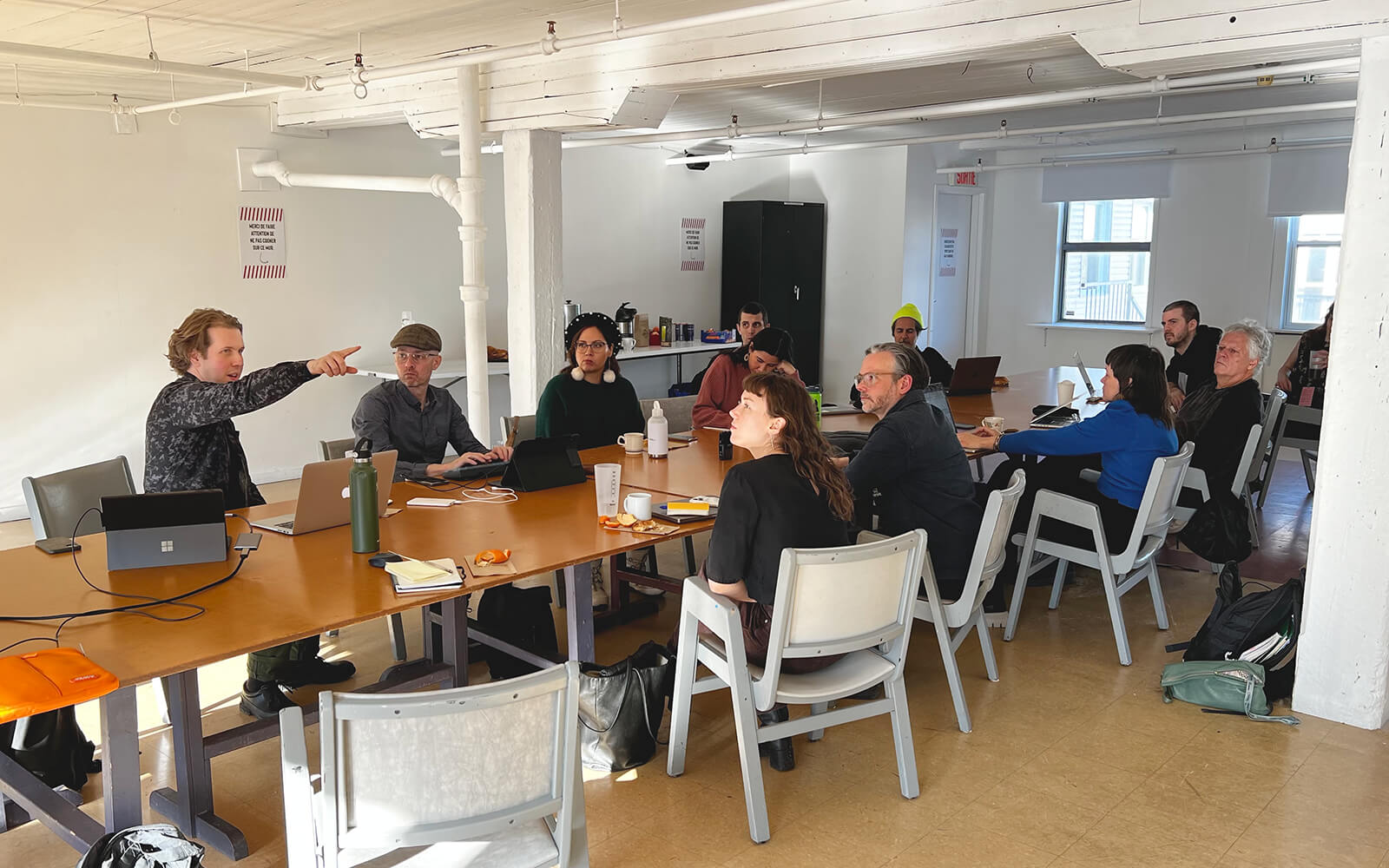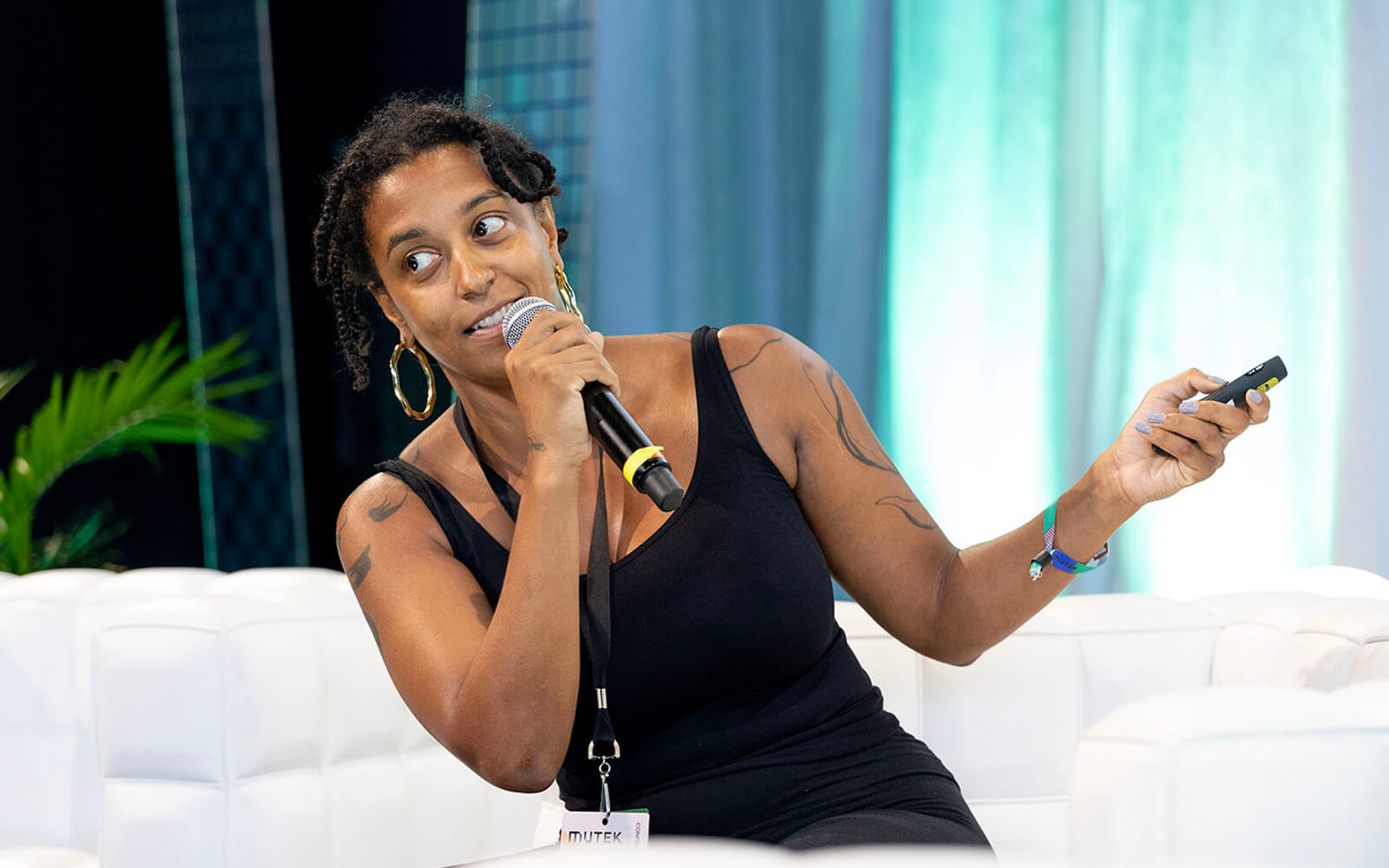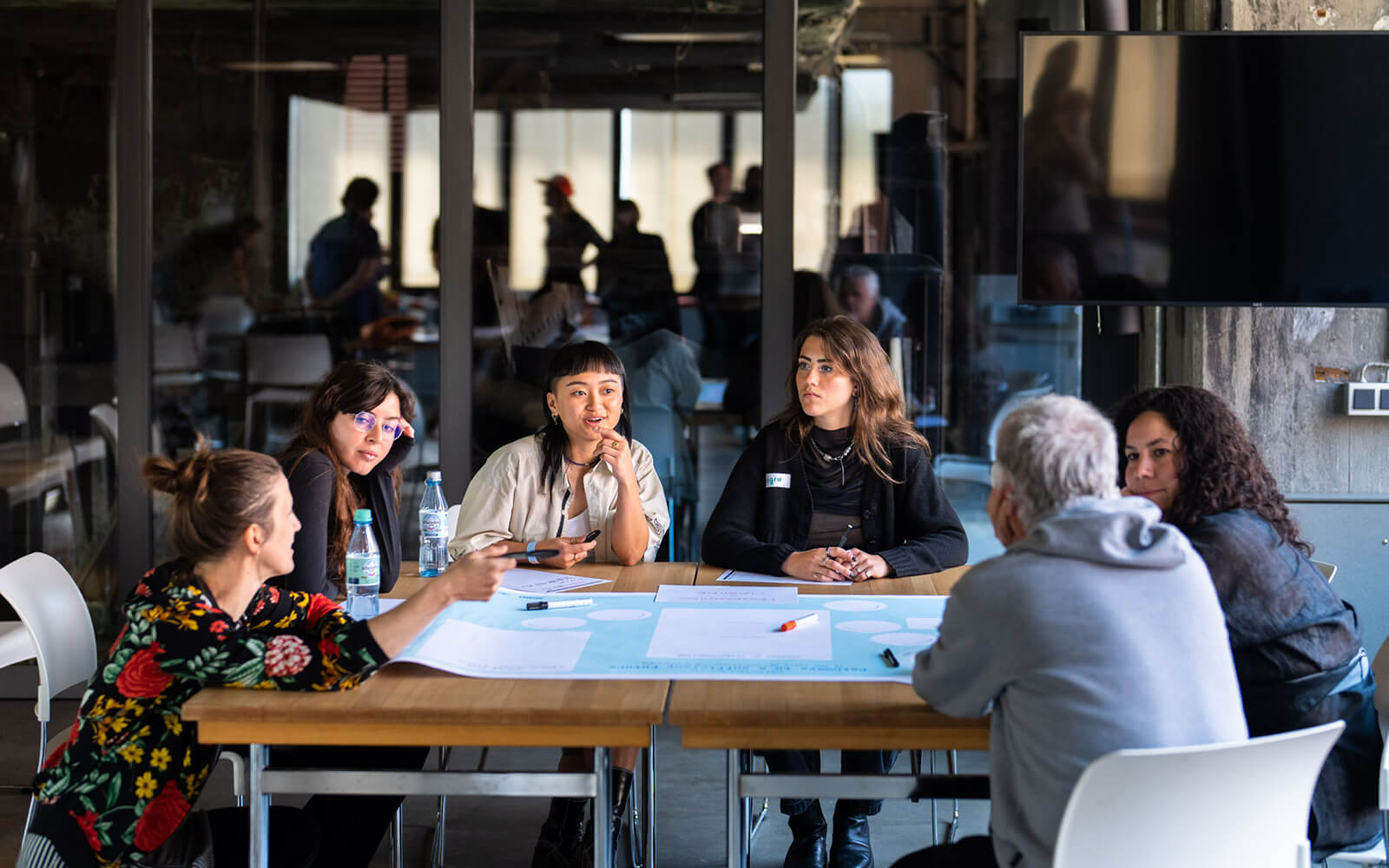Future Festivals Field Guide: Jasmin Grimm Reassesses Our Fossil Fuel Heritage
“It’s not about audience size and the number of artists or artworks, but about creating experiences and making them meaningful.”
Jasmin Grimm is a German-Algerian curator and creative entrepreneur. She is the founder and artistic director of NEW NOW Festival. Prior, she has directed programs for NRW-Forum, Goethe Institute, Bitkom, the Competence Centre for Cultural & Creative Industries of the German Federal Government, Retune Festival and TINCON. She was a programme advisor for the Kulturstiftung des Bundes, Futurium, Ministry of Culture and Science of the State of North Rhine-Westphalia. (Photo: Constanze Flamme)
Q: Launched in 2021, NEW NOW is the youngling in the Future Festivals group. But it’s not without history: Home at Zollverein, a UNESCO World Heritage Site and once the world’s largest coal mine, the festival imbues this industrial beheamoth with new meaning. What can you tell us about engaging with site’s complicated legacy and, at the same time, putting a new festival on the map?
A: The Zollverein mining complex can teach us how to reinterpret extractive history into a forward-looking mandate: NEW NOW explores our fossil fuel heritage and its impact on the planet through digital art. The coal mine may be closed, but its output continues to be felt: between 1851 and 1986 about 240 million tonnes of coal were mined and subsequently burnt, much of its carbon still lingering in the atmosphere where it will drive warming for centuries to come. These complex interactions, between industrial society, consumer capitalism, and nature, were the starting point for our artistic research and inspired the NEW NOW residency program. The artworks that emerge from it deal with this tension.
Positioning a new festival in this context is an exciting challenge. How do we build new cultural infrastructures in times of environmental breakdown and vanishing resources? How do we create a space that offers a hopeful vision for the future? What can we contribute and whose voices should we amplify? We ask ourselves these questions all the time.
Positioning a new festival in this context is an exciting challenge. How do we build new cultural infrastructures in times of environmental breakdown and vanishing resources? How do we create a space that offers a hopeful vision for the future? What can we contribute and whose voices should we amplify? We ask ourselves these questions all the time.
“The site’s extractive history became a mandate: NEW NOW explores our fossil fuel heritage through digital art.”
Q: The first two editions of NEW NOW were squarely focused on the climate crisis and new ecologies. What difference do you think festivals can make when it comes to addressing major issues with their program? Which NEW NOW format or commission are you particularly proud of bringing into the world in that regard?
A: I believe in the power of art to shape new narratives, connect people, and shift perspectives over time. Given the site’s specific historical context and the times we find ourselves in, it was clear that NEW NOW needed to address our relationship with the environment. Many of the works we commissioned left a strong impression in that regard. Kimchi and Chips’ large-scale outdoor installation Another Moon (2021), for example, had a virtual moon rise over Zeche Zollverein every night during our first edition. Running fully circular, the piece collected sunlight during the day and projected it back into the sky at night, heralding a new era of renewable energy. This year, Pinar Yoldas’ Time Tunnel (2023) touched many people: a laser projection set inside a decommissioned chimney teleported audiences 320 million years back into the Carboniferous, the geological age when coal first formed. This journey through deep time, back into Zeche Zollverein’s pre-history, was a powerful reminder of how little time we human beings have spent on this planet, yet how seismic and largely irreversible our impact has been. It was a magical, but truly sobering experience.
Q: The untenable environmental cost of cultural production is one of the key challenges the Future Festivals group identified in its agenda. How has NEW NOW dealt with its own energy and resource footprint within its thematic focus on ecology?
A: This is a very important question! We are still exploring ways to reduce the festival’s ecological footprint. We mainly work with European artists, for example, to prioritize train travel. The decision to run the festival in the summer was also related to sustainability: the Zollverein facilities require massive heating during the winter months. Recently, I learned about the concept of CO2 budgets for cultural projects and how they can help manage the energy footprint every step of the way: you set an overall emission target and make sure all individual decisions align with it. It would be productive to apply this to future activities.
Kimchi and Chips’ solar-powered outdoor installation Another Moon (2021) beamed a virtual moon into the sky over Zollverein during NEW NOW’s inaugural edition.
Q: The Future Festival Lab at NEW NOW explored sufficiency—the suggestion that rather than perpetually maximizing output, we focus on essentials and cultivate content within those means. As a festival that activates not only Zollverein site but the rentire egion, where do you think NEW NOW could do more with less?
A: I really love sufficiency as a path towards sustainability, the notion of focusing on what’s really needed to live what its proponents call a ‘good life.’ The workshop reminded me again that festivals should prioritize quality over quantity, that it’s not about audience size and the number of artists or artworks in the show, but about creating experiences and making them meaningful. Rather than spaces for consuming culture, we should create spaces for transformation and connection.
One thing I’d like to see more of is communication between festivals and institutions. When an artist has to fly to Europe for a project, for example, it would make sense to coordinate other shows, meetings, and events to make those emissions count. For this to happen, however, the obsession with exclusivity in festival line-ups and cultural programs has to soften. We need cooperation, instead.
“I see great purpose in festivals’ political power, how they strengthen society, and help build resilience against threats to democracy.”
Q: Other than sustainability, which areas do you think NEW NOW and festivals in general need to do better in or innovate to remain relevant in the future? Any issue that you have your eyes on in particular?
A: Festivals have always been great at fostering connection, creating community and a sense of belonging, if only for a moment. I still believe this is a festival’s most important function, one that will become even more important as people feel increasingly isolated and turn to social media for human connection. I also see great purpose in their political power, how they strengthen society, and help build resilience against threats to democracy. I guess it’s not really about innovation but recognizing what festivals already contribute to society and further cultivating it.
Future Festivals Field Guide
Future Festivals Field GuideExplore more of "Future Festivals Field Guide:"
→ HOLO.mg/stream/
→ HOLO.mg/future-festivals-field-guide/
Alexander Scholz
Alex is a Berlin-based writer, artistic director, and cultural worker. As the founder and creative director of HOLO, he helps produce and disseminate knowledge on disciplinary interstices, artistic research, and cultural transformations in the digital age. Over the years, he curated exhibitions, conferences, and educational programmes for organizations and festivals including A.C.C. (KR), Mapping (CH), MUTEK (CA), and NODE Forum for Digital Arts (DE).
